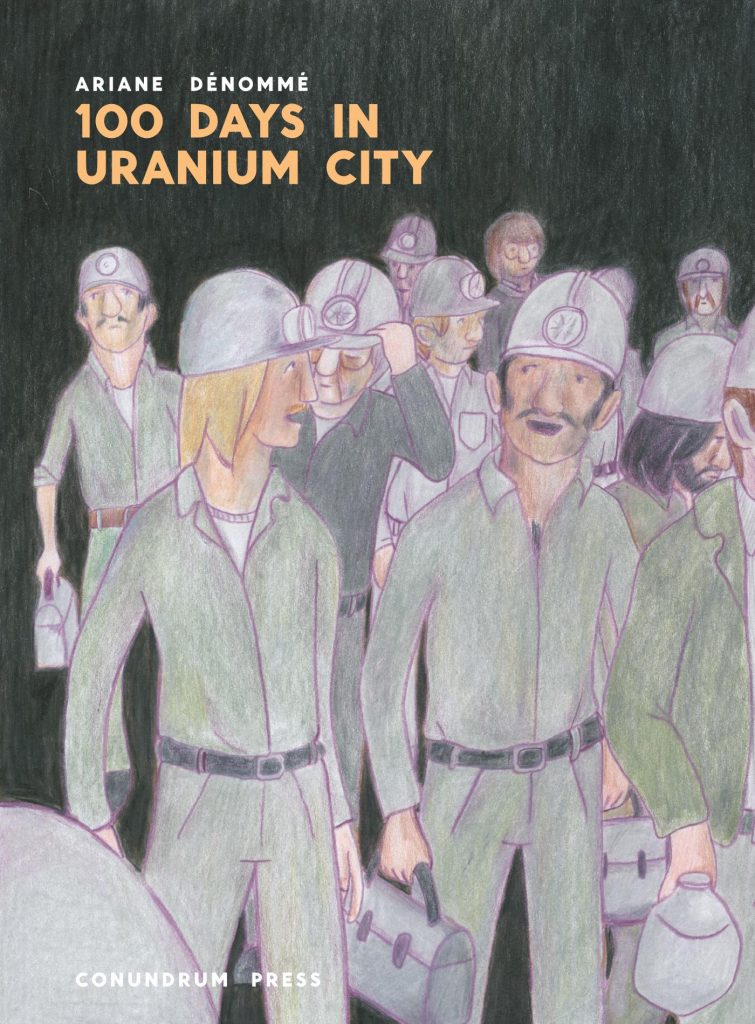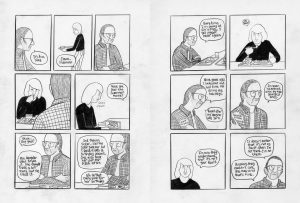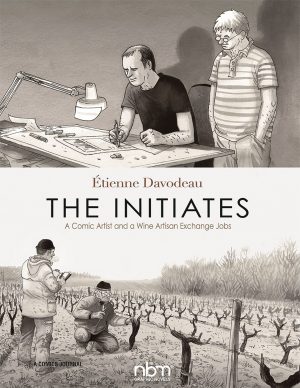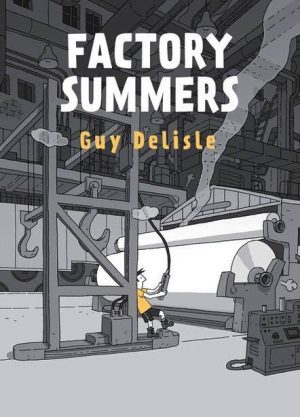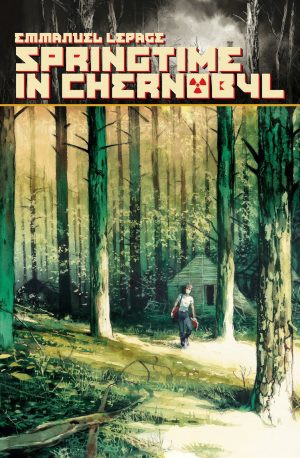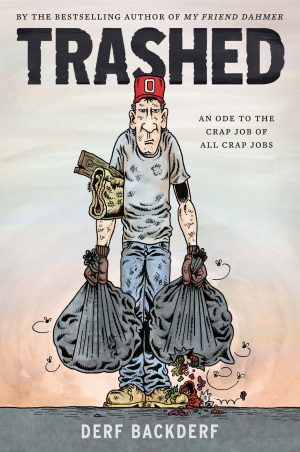Review by Ian Keogh
Life in any mining community is hard, but perhaps more so when it’s uranium being mined, given the additional dangers that entails. Daniel is a miner in the 1970s, at the start of the book without any ties. It makes the work pattern of a hundred days on shift followed by just two weeks off more bearable for him than it is for his colleagues with families. That work pattern makes no allowances for holidays or personal problems. How it is for those with families is deftly shown by Ariane Dénommé’s sample art.
It can be seen that Dénommé is a functional artist rather than one who’ll win awards, but her simple methods work well in creating alienating environments, places no-one would want to be unless they had to be there. Her storytelling emphasises the isolation. Once on site, any moments of pleasure are few and far between, tedium is universal and small moments can become large problems among men with nothing to do but work and contemplate how many days of their hundred remain. Dénommé’s especially good at sliding in practical information. At one point Daniel considers buying a house near the mine, but it’s pointed out that the mine will eventually close and he’ll be left with a property he’ll be unable to sell. While there’s far more than the average wage to be earned on the job, the pent-up frustrations mean it’s also easily spent during the two week breaks.
100 Days in Uranium City has a creative imbalance, where Dénommé’s writing skill outpaces her art. Choosing to have the viewpoint entirely restricted to Daniel personalises the boredom and isolation, and provides a sinister distance to employers whose rules are absolute. She’s good at defining that boredom through silent, contemplative panels, and when toward the end we’re given a reminder of what a dangerous job any kind of mining is, the approach is nicely understated.
The biographical information at the end mentions the story is based on the experiences of Dénommé’s father, but she manages to turn that into something that stands as universal in addition to being a fine testament.
